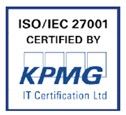Common IP Myths Busted — Part 3: Protecting Your Rights
14 December 2021
Authors: Sarita Schröder and Panu Siitonen
As the value of intellectual property in business has increased, so too has companies’ knowledge about how best to protect, commercialise, and enforce their rights. However, in our work as IP lawyers, we still regularly encounter many persistent misconceptions on the topic. In this blog series, we examine and debunk some of the most common of these.
You can find links to the other parts of this blog series at the end of this post.
Myth #5: We Can and Should Protect All of Our IP Globally
In an increasingly globalised and digitalised business environment, it is tempting to think that all IP should be protected globally. However, while global protection might be ideal, it is unfortunately far from realistic in most — if not all — cases.
IP rights are territorial rights, meaning that each IP right generally only enjoys protection within a specific country or region. For example, if a company registers a trademark in Finland, that trademark will give them the right to prohibit competitors from using an identical or similar trademark in Finland but not, for example, in Sweden. On the other hand, by registering an EU trademark, the company will gain an exclusive right to their trademark throughout the EU but not globally.
Copyright forms somewhat of an exception to the territoriality principle. Pursuant to the Berne Convention for the Protection of Literary and Artistic Works, to which most countries in the world are contracting parties, a work originating from and protected by copyright in one contracting state must be given the same protection in each of the other contracting states as the latter grant to the works of their own nationals. Consequently, copyright protection can be considered almost global.
For the most part, however, the territoriality principle applies. This means that separate applications are required to gain protection in different countries or regions. Each application generally carries a separate fee, and although the individual fees may not be particularly high (see myth #6 below), the fees can quickly mount up when filing multiple applications.
Certain international systems have been developed to make it easier and more cost-efficient to gain IP protection in multiple countries or regions through a single application. These include the Madrid System for trademarks, the Hague System for designs, and the European Patent Convention for patents. However, even when using these systems, the application fees will increase as the number of countries or regions covered by the application increase. Therefore, prioritisation is necessary.
The countries or regions in which it is advisable for a company to protect their IP will vary greatly depending on, among other things, the nature and geographical scope of the company’s business, where their possible manufacturers or distributors are located, and what kind of expansion plans they may have for the future. In addition to the company’s current and foreseeable key markets, it is usually advisable to at least consider the need to apply for protection in major world economies such as the United States and China.
If filing applications in several jurisdictions at once seems like too big and risky of an undertaking, it is good to note that for many types of IP, a so-called priority period is available. This means that for a certain period after the first filing of an application for a trademark, design, utility model, or patent, subsequent applications filed by the same applicant for the same IP in different jurisdictions will be treated as if they had been filed on the date of the first application, provided that priority is claimed. The priority period is generally 6 months for trademarks and designs and 12 months for utility models and patents. This gives companies the opportunity to take some time to consider where in the world they want and need to protect their IP, while also ensuring that they do not suffer any loss of rights in doing so.
Myth #6: IP Registrations Are Expensive
The costs associated with IP registrations can vary substantially depending on a number of factors. Among other things, these include the type of IP and jurisdiction(s) concerned, the scope of protection sought, and whether or not there are any potential obstacles to the registration. Assuming that everything goes smoothly, the costs for filing an application and completing the registration process for a single trademark or design in one jurisdiction will typically be in the lower end of the four-digit figures (including attorneys’ fees), whereas obtaining a utility model or patent registration is usually somewhat more costly.
However, in many cases, the rights granted will remain in force for at least some years before any additional fees are due. Moreover, in any case, the initial moderate investment in IP protection can pay huge dividends down the line in the form of cost-savings (e.g., because the rightsholder is better equipped to avoid or at least handle disputes and litigation), licensing revenues, and more favourable funding and investments.
Myth #7: We Can Save Costs by Handling Things Ourselves
While it is usually not impossible for a company to register IP rights without the help of external counsel, doing so is generally not advisable. IP is a field of law with a lot of rules and technicalities that must be followed precisely at risk of a loss of rights that can be irrevocable. Therefore, if a company does not employ an individual with substantial experience of dealing with IP matters, there is a high risk that something will go wrong and that the company will end up investing money in an application that is doomed from the start to fail.
On the other hand, the fees charged by external counsel specialised in IP matters for their assistance in the registration process are typically not as high as one might expect. Therefore, before assuming that it is more cost-efficient handle things independently, it is at least worth asking for a fee quote or two from experts in the field. In doing so, the company may even get some free tips from the experts on how it could be most prudent to proceed.







